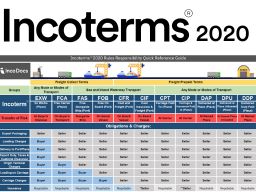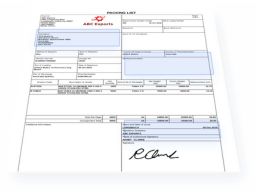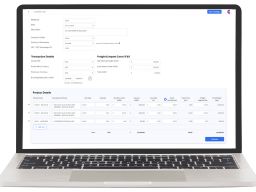CBM Calculator for Seafreight FCL & LCL Shipping
How to Use the CBM Calculator for Seafreight FCL & LCL
To use the CBM calculator for seafreight FCL & LCL shipping, enter the details of each package to instantly calculate the package CBM volume, total volume, and total weight of each shipment.
Use the CBM calculator by following these steps:
- Select the type of shipping container: 20’GP General Purpose, 40’GP General Purpose or 40’HC High Cube. Note that the container’s Maximum Loading Volume and Maximum Loading Weight will show default values. You can also click to edit these values, according to your needs.
- Enter the length, width, height and weight of each package, and the number of packages. Click ’Add Package’ to add new package details as required.
The CBM calculator will give you the following calculations:
- Total Weight Kg (of all packages in each row)
- Package Volume CBM m3
- Total Volume CBM m3 (of all packages in each row)
- Total Shipment Volume CBM m3 - a bar graph will show a percentage of how full the shipping container is by cubic volume
- Total Shipment Weight Kg - a bar graph will show a percentage of how full the shipping container is by weight.
What is CBM in shipping?
The CBM Calculator measures shipment volume in cubic meters, which is important in shipping and logistics. CBM stands for Cubic Meter (m3), which confirms the total space that your shipment occupies. In shipping, CBM (cubic meter) is a standard unit of measurement for freight volume. This is important for international trade.
The CBM Calculator helps by providing shippers with individual and overall packaging cubic volumes and weights. When shipping goods via FCL, this helps shippers to plan the loading of shipping containers. When shipping goods via LCL cargo, it helps shippers understand the freight costs.
Shipping companies or freight forwarders usually charge based on volume or weight, whichever is greater. Understanding CBM and weight data will help shippers in many ways, including:
- Understand the total freight costs that the shipment volume will incur
- Calculating the Landed Costs of imported products. Use the IncoDocs Landed Cost Calculator here.
- Plan purchasing quantities
- Plan the loading of shipping containers
CBM Calculation Explained
The formula for calculating CBM is quite simple. Multiply the Length x Width x Height of your package in meters. The result is the cubic meter volume (m3). See below formula and example for CBM calculations:
A pallet is 1.2m long, 1.2m wide, and 1.5m high
The formula is: Length (m) x Width (m) x Height (m) = CBM (m3)
The calculation is: 1.2m x 1.2m x 1.5m = 2.16 CBM (m3)
How to Calculate the Chargeable Freight Rate using DIM Factors
For any particular shipment, the chargeable freight rate depends on the CBM volume and the Actual Weight or the DIM Weight (Dimensional Weight) of the shipment, whichever is greater.
It’s important to understand that Sea, Air or Road carriers will use the greater of the Actual Weight or the Dimensional Weight (also known as the volumetric weight, orcubed weight) to determine the chargeable cost to move the freight. For example, light but bulky items may cost more due to the large space that they occupy.
When calculating the chargeable weight, shipments via Sea, Air and Road will use a different DIM Factor (Dimensional Weight Factor, also known as the conversion factor/conversion rate). The different factors, conversion rates and formulas for the different modes of transport are as displayed in the table below.
| Mode of Transport | DIM Factor | Conversion Rate (kg per CBM) | 1 CBM to kg | Formula to Calculate Dimensional Weight |
|---|---|---|---|---|
| Seafreight | 1000 | 1000 | 1 CBM = 1000kg | Length (m) x Width (m) x Height (m) x 1000** |
| Airfreight | 6000 | 167 | 1 CBM = 167kg | Length (cm) x Width (cm) x Height (cm) / 6000 |
| Parcel / Courier | 5000 | 200 | 1 CBM = 200kg | Length (cm) x Width (cm) x Height (cm) / 5000 |
| Roadfreight LTL | 3000* | 333* | 1 CBM = 333kg | Length (cm) x Width (cm) x Height (cm) / 3000 |
| Railfreight | 3000* | 333* | 1 CBM = 333kg | Length (cm) x Width (cm) x Height (cm) / 3000 |
How to Calculate the Chargeable Freight Rate for a Seafreight Shipment?
By LCL Shipping
If you ship goods via LCL cargo, the carrier or freight forwarder will charge for the freight per 1m3 or per 1000kg (Metric Tonne MT). If a freight rate is quoted at $80USD per CBM/MT, let’s look at 2 examples below.
Shipping 1 pallet of goods. Pallet size: 1.2m x 1.2m x 1.5m. Pallet weight: 550kg.
- CBM Volume = Length (m) x Width (m) x Height (m). That is 1.2 x 1.2 x 1.5 = 2.16m3
- Actual Gross Weight = 550kg (0.55MT)
Since the CBM volume is greater than the actual gross weight, the freight will be charged on the basis of CBM volume.
So the freight cost = $80USD x 2.16m3 = $172.80USD
Shipping 1 crate of goods. Crate size 1.8m x 1.2m x 1.2m. Crate weight: 2900kg.
- CBM Volume = Length (m) x Width (m) x Height (m). That is 1.8 x 1.2 x 1.2 = 2.59m3
- Actual Gross Weight = 2900kg (2.9MT)
Since the actual gross weight is more than the CBM volume, the freight will be charged on the basis of actual gross weight.
So the freight cost = $80USD x 2.9MT = $232USD
By FCL Shipping
Note that for FCL shipping, the freight will be charged per container. For example, the freight rate to move a 20’GP container from Shanghai port to Longbeach port may be $3000USD, regardless of the total CBM volume or gross weight inside the container. Read more about FCL and LCL shipping here.
How many CBM and products can I fit into a shipping container?
The total number of products, packages and CBM that you can fit into a shipping container depends on a few factors, such as:
- The size and shape of each of the products
- The size, shape and type of packaging used (i.e. pallets, skids etc)
- How the packages are loaded, stacked and strapped inside the shipping container
Because of this, it’s nearly impossible to utilize 100% of the shipping container’s loading capacity (unless you fill the container with water). There will always be some ‘empty’ space in between the different packages.
As a general rule, the useable capacity of a shipping container is around 80% of the maximum capacity. For example, a 20’GP General Purpose shipping container can hold a maximum capacity of 33m3. However, the useable capacity is around 27m3.
Here are the most common container types with their dimensions and their cubic meter volumes:
| Container Type | Dimensions (m) | Maximum CBM | Maximum Useable CBM | Maximum Cargo Weight | Maximum Cargo Useable Weight |
|---|---|---|---|---|---|
| 20’GP General Purpose | 5.9m x 2.35m x 2.35m | 32-33m3 | 27m3 | 28,300kg | Country Limit Restrictions |
| 40’GP General Purpose | 12.03m x 2.35m x 2.39m | 67-68m3 | 54m3 | 26,800kg | Country Limit Restrictions |
| 40’HC High Cube | 12.03m x 2.35m x 2.69m | 76-77m3 | 61m3 | 26,600kg | Country Limit Restrictions |
What is the Maximum Weight that can be loaded inside Shipping Containers?
The maximum weight that can be loaded into a shipping container is determined by several factors, including the container’s own structural limits, the transportation method, and the regulations of the exporting and importing countries.
Different countries have their own regulations regarding the maximum weight allowed for transporting shipping containers, and these can affect the amount of cargo that can be loaded. To give some examples:
- In the European Union, the maximum weight for a loaded container transported by road is often limited to 44,000 kg (97,000 lbs), including the truck and container. In contrast, some African and Asian countries may have different weight limits due to varying infrastructure capabilities and safety standards.
- In Australia, the road transport regulations limit the gross weight of a container to 42,500 kg (93,700 lbs), including the vehicle and shipping container.
This means that while the container itself might be structurally capable of carrying more, the cargo weight must be adjusted to comply with national transport laws. These differences highlight the importance of understanding and adhering to local regulations to avoid fines, delays, and potential damage to goods.
Frequently Asked Questions
How much CBM is in a 40ft container?
A 40ft General Purpose shipping container can hold a maximum of approximately 67-68m3 based on its internal dimensions. However, based on the sizes and shapes of the packages, and how they are loaded inside the shipping container, the maximum volume of packages that fit could be around 54m3.
A 40ft High Cube shipping container can hold a maximum of approximately 76-77m3 based on its internal dimensions. However, based on the sizes and shapes of the packages, and how they are loaded inside the shipping container, the maximum volume of packages that fit could be around 61m3.
How does a Verified Gross Mass (VGM) Declaration work?
The SOLAS VGM regulation was created to ensure that shippers correctly declare the total ‘verified gross mass’ of a FCL shipping container that is ready for export. These regulations were updated to avoid accidents along the global supply chain due to misdeclared gross weight of shipping containers.
Shippers can use ‘Method 1’ or ‘Method 2’ to verify the gross mass and then provide a Verified Gross Mass Declaration document. Read more about VGM declartions.
How do you calculate the CBM of an irregular shaped box?
Calculating the cubic meter of an irregular-shaped carton is a bit different, but maintains the same formula. First, find the maximum length, width and height of the carton. Treat it as if it fits into a regular cuboid. Measure the maximum length, maximum width and maximum height of the carton. Use these measurements as if they form a regular carton.
For an irregular shaped carton, the maximum length is 0.4m, the maximum width is 0.3m, and the maximum height is 0.3m.
- The formula is: Length (m) x Width (m) x Height (m) = CBM (m3)
- The calculation is: 0.4m x 0.3m x 0.3m = 0.036 CBM m3
CBM Calculation for Multiple Boxes or Cartons
Calculating CBM for multiple boxes or cartons is simple. First, calculate the CBM for one box/carton using the formula: Length (m) x Width (m) x Height (m) = CBM.
Once you have the CBM of one box/carton, multiply that by the number of boxes/cartons to get the total volume in CBM.
A shipment contains 12 cartons. Each carton dimension is 80cm x 40cm x 40cm.
- CBM per carton is 0.8 x 0.4 x 0.4 = 0.128m3
- CBM for 12 cartons = 0.128m3 x 12 = 1.536m3
How to Calculate CBM for Pallets
To calculate the CBM for pallets it is quite simple. Multiply the Length x Width x Height of your package in meters (be sure to include the pallet bast in your dimensions). The result is the cubic meter volume (m3) for pallets. See below formula and example for CBM calculations:
A pallet and it’s contents is 1.2m long, 1.2m wide, and 1.5m high
- The formula is: Length (m) x Width (m) x Height (m) = CBM (m3)
- CBM for pallet calculation is: 1.2m x 1.2m x 1.5m = 2.16 CBM (m3)
If you have multiple pallets, multiply the CBM of one pallet by the total number of pallets to get the total CBM: 2.16m3 x 4 pallets = 8.64m3
Difference between Sea Freight and Air Freight CBM
Air freight charges are often based on the greater of actual weight or volumetric weight. This is calculated differently from sea freight.
As mentioned above, for airfreight shipments, 1 CBM is equal to 167 kilograms. This means for every cubic meter of space your cargo occupies, the chargeable weight is considered to be 167 kilograms. For seafreight shipments, 1 CBM is equal to 1000kg. This shows that seafreight is more volume-based. It can accommodate larger quantities of goods without the same weight restrictions as air freight or courier/postal shipments.


